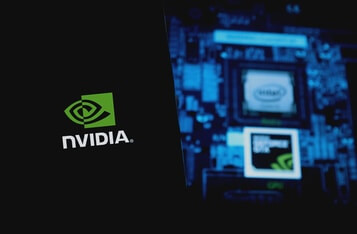NVIDIA's NIM Agent Blueprint Transforms Drug Discovery with AI-Driven Virtual Screening
NVIDIA has unveiled its NIM Agent Blueprint, a generative AI-based virtual screening tool aimed at revolutionizing the drug discovery process. This innovative approach promises to significantly reduce both the time and cost of developing life-saving drugs, according to the NVIDIA Blog.
What is the NIM Agent Blueprint?
The NIM Agent Blueprint introduces a comprehensive guide to using NVIDIA's NIM microservices, modular, cloud-native components designed to accelerate AI model deployment and execution. These microservices allow researchers to integrate advanced AI models into their workflows, optimizing key stages of drug discovery, such as hit identification and lead optimization.
Applications in Drug Discovery
Drug discovery traditionally involves three critical stages: target identification, hit identification, and lead optimization. The NIM Agent Blueprint streamlines these processes, focusing particularly on the hit-to-lead transition. By leveraging generative AI, researchers can design better molecules faster, moving away from traditional fixed database screening.
The core of this blueprint incorporates three essential AI models:
- AlphaFold2: Known for its groundbreaking impact on protein structure prediction, now integrated as an NVIDIA NIM.
- MolMIM: A novel model developed by NVIDIA that generates molecules while optimizing for multiple properties like high solubility and low toxicity.
- DiffDock: An advanced tool for modeling the binding of small molecules to their protein targets.
These models, packaged within NVIDIA NIM microservices, work in concert to enhance the hit-to-lead process, making it more efficient and faster.
Industry Adoption and Future Prospects
Leading computational drug discovery and biotechnology software providers, including Schrödinger, Benchling, Dotmatics, Terray, TetraScience, and Cadence Molecular Sciences (OpenEye), are already integrating NIM Agent Blueprints into their platforms. These integrations aim to accelerate the identification of viable drug candidates, thus reducing the time and cost involved.
Additionally, Accenture is poised to tailor the NIM Agent Blueprint to specific drug development programs, optimizing the molecule generation step with input from pharmaceutical partners. The NIM microservices will soon be available on AWS HealthOmics, streamlining the integration of AI into existing drug discovery workflows.
Revolutionizing Drug Development with AI
The stakes in drug discovery are high, with the development of a new drug typically costing around $2.6 billion and taking 10-15 years, with a success rate of less than 10%. NVIDIA's AI-powered NIM Agent Blueprint aims to reduce these costs and shorten development timelines in the $1.5 trillion global pharmaceutical market.
By pre-optimizing molecules for desired therapeutic properties, this blueprint represents a significant shift from traditional methods. For instance, MolMIM uses advanced functions to generate molecules with optimized pharmacokinetic properties, a marked advancement over previous methods.
This smarter approach to small molecule design enhances the potential for successful lead optimization, accelerating the overall drug discovery process. This leap in technology could lead to faster, more targeted treatments, addressing growing challenges in healthcare, from rising costs to an aging population.
NVIDIA's commitment to supporting researchers with the latest advancements in accelerated computing underscores its role in solving the most complex problems in drug discovery.






